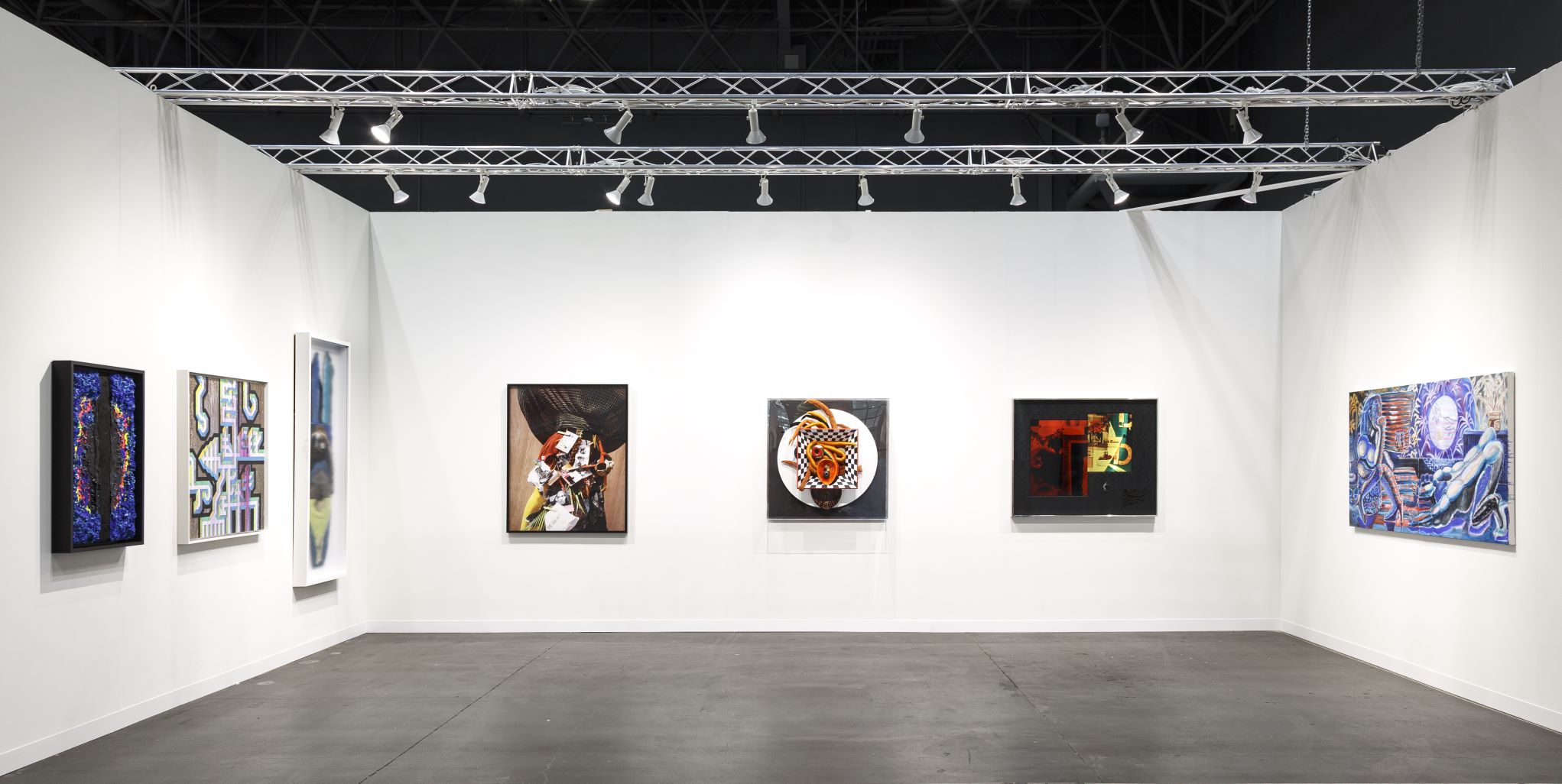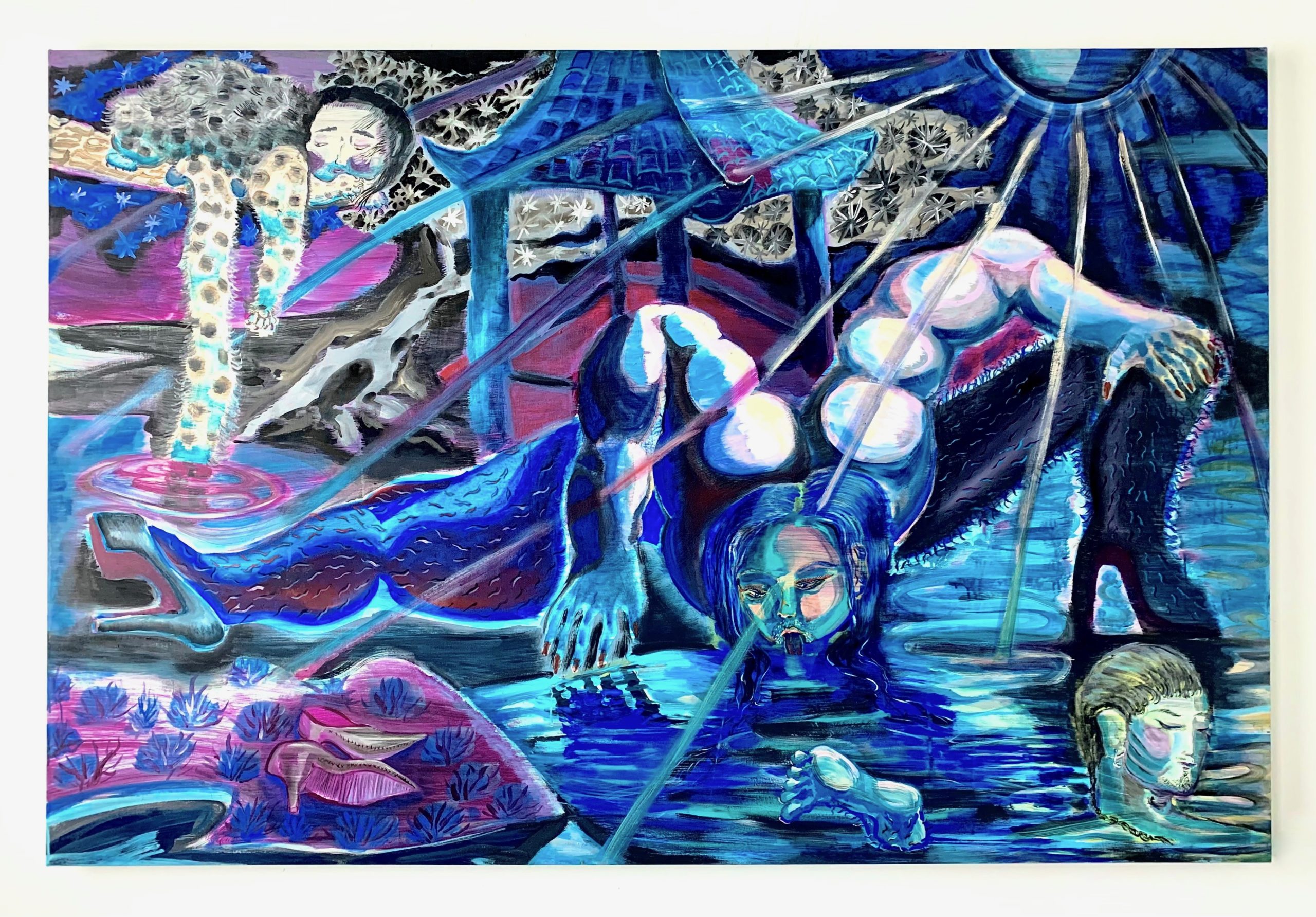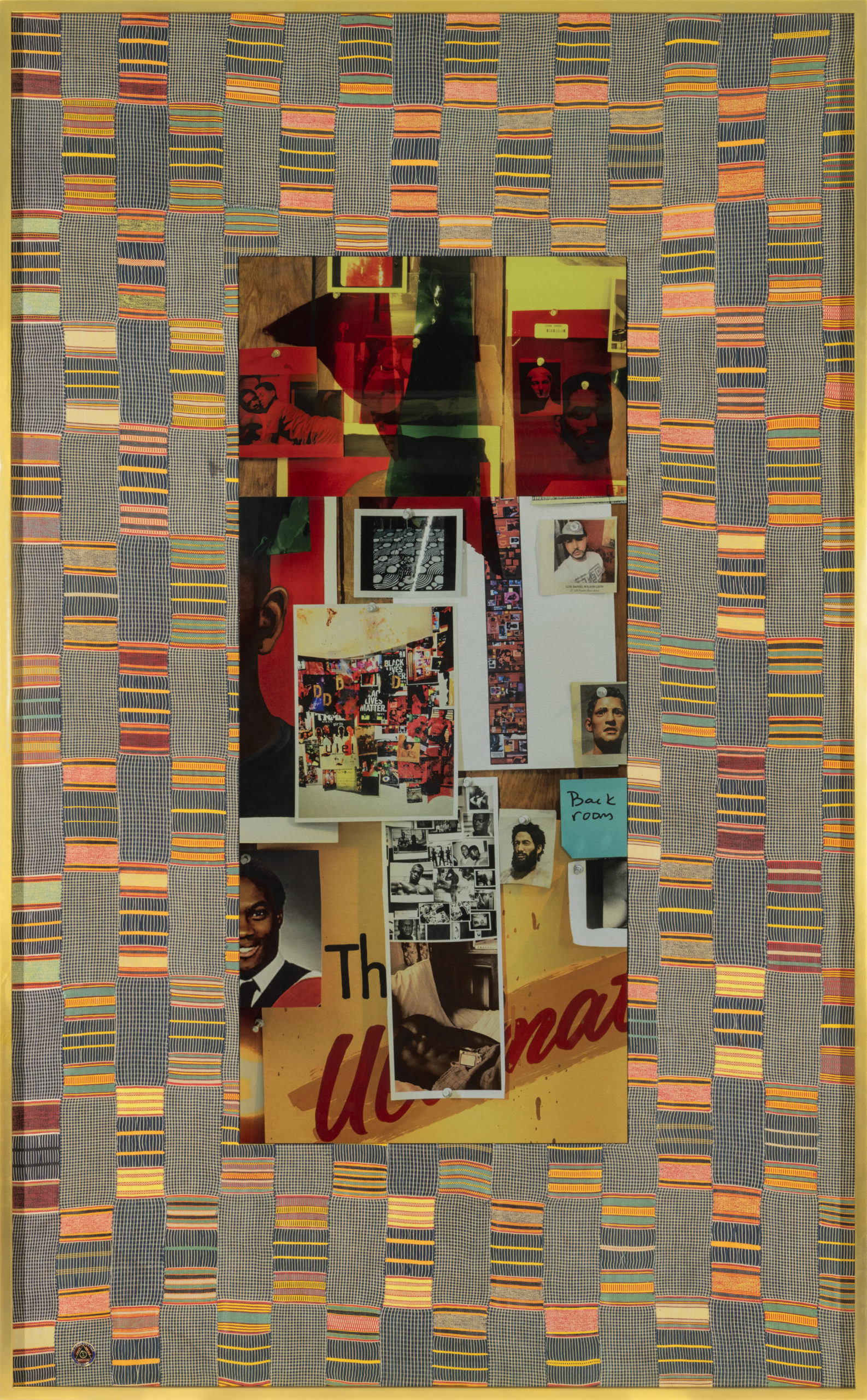The Armory Show
September 9 – September 12, 2021
For The Armory Show 2021, David Castillo presents a selection of paintings, photographs, and assemblages by gallery artists Maria de los Angeles Rodriguez Jimenez, Lyle Ashton Harris, Pepe Mar, Glexis Novoa, Xaviera Simmons, Vaughn Spann, and Yesiyu Zhao.
The works on view each explore degrees of ritual, the canonization of images and objects, and the mechanisms by which symbols are elevated to the strata of sacredness. These pieces operate dually: some do the work of elevating unexpected or overlooked histories to the status of icon; while others challenge the enduring and at times uneasy legacies of the hallowed figures or signs that we carry from the past into the present. Critical to these works is the impetus to redefine the sacred and audit the reverence that is given to certain people, places, and things. What is now held precious and dear could very well fall from favor and grace; while that which is considered Other could, in the same vein, become exalted and sacrosanct.
Maria de los Angeles Rodriguez Jimenez charges her work with corporeal and spiritual substance, constructing them in abstracted, organic forms that render them something approaching both the body and its psyche. Drawing influence from her experience of migration from Cuba to the United States, as well as from Afro-Cuban belief systems, the artist considers the weight that objects carry within them as they move forward in time and between people. Her piece Portal conveys the power of objects to serve as passages to other realms, times, and experiences.
In richly layered assemblages, Lyle Ashton Harris canonizes activist pasts, popular cultures, and his personal experiences of living through these histories. Referring to these pieces as his Shadow Works, the artist brings together objects that he has collected and images that he has photographed or found over the years, drawing associations between these items, their points in history, and their significance within Harris’s practice. Kennedy Crash #2 includes cuttings from Harris’s own hair, an image of the 1999 cover article published in The New York Times that reported John F. Kennedy Jr.’s death, and a large crystal, all embedded within a backing of Ghanaian fabric; this work, and the rest in the series, serve as memorials through the eyes of the artist to the various events and figures that left their mark along the timeline of his life and career.
Pepe Mar fashions complex and unexpected material conglomerations, layering together diverse objects found in second-hand stores and queer enclaves. Enshrined in boxes of wood or Plexi, these assemblages and collages blend together the diverse histories—the past uses and owners—of the items from which they are comprised. From these assorted belongings and artifacts, Mar forms anthropomorphized figures called Paprikas that are in many ways alternate personifications of himself; these Paprikas consume the influences that surround Mar and are thereby made of them, forming an idolatry of his personal obsessions.
Glexis Novoa’s work incisively illustrates the undue social, cultural, and political power hidden within the iconographies and messaging of our present-day institutions. His commentaries are grounded in a formalist design language inspired by Russian Constructivism, an artistic philosophy and movement that in the early 20th century employed visual culture as a propagandistic tool; here, Novoa reaches into this history to reference art’s utility to both frame the ideologies pushed forward by dominant powers, as well as its subversive possibilities. In his Mutation series, the artist creates geometric designs that alternate between fractal formations and whispers of language emerging along the logic of these patterns, revealing the ultimately unknowable and uncanny potentials of viral spread.
Xaviera Simmons deconstructs the genres of American landscape painting and photography and considers their charged iconographies and their key roles in the country’s program of nation-building throughout the 18th, 19th, and 20th centuries. The artist challenges the sanitized narratives of heroism and exceptionalism endemic to the country’s ideologies of space, suggesting deeper and more complex histories to be excavated within these pictorial iconographies.
Vaughn Spann’s heavily textured paintings bear the layers of meaning that symbols carry over time; figuration provokes his approach to abstraction, leaving recognizable and deconstructed iconographies embedded within the surfaces of his pieces. Working with longstanding motifs and imageries—like the ‘X’ or the rainbow—Spann reimagines their distinct associations and meanings to speak in a poetic and nuanced way to the urgent questions of our age. Referencing the Jack Kerouac poem of the same title, Spann’s The Taste of Rain considers the reverential act of kneeling.
Yesiyu Zhao defies the social, cultural, and political constructions of femininity and masculinity as mutually exclusive traits that assign neatly to a particular gender. His work celebrates the disobedience of individuals, and their bodies, in refusing to be constrained by limited definitions of gender identity. The figures in his work are outfitted and groomed in hybrid combinations of stereotypically masculine and feminine fashions and characteristics. In the piece Reverence, a muscular, hairy individual who wears a long braid and high heels bows in veneration of another with similar bodily structure and styling, elevating the status of those who see themselves outside of societal expectations.
Taken together, these works present the always-changing contexts that inflect the means through which we approach acts of veneration and belief.




















